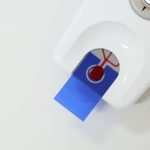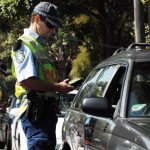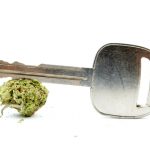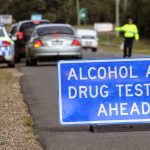Drug Driving Laws Are Not About Road Safety
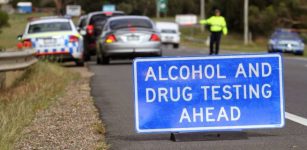
In December 2015, the NSW government announced it was tripling the number of mobile drug tests carried out annually to 97,000 tests by this year. As might be expected, the number of motorists being charged with drug driving offences has also skyrocketed.
A Bureau of Crime Statistics and Research report found that the number of people charged with drug driving in NSW increased by 320 percent over the 24 months ending in June last year. The authors put this down to increased policing, rather than any rise in drug driving.
However, the legitimacy of Mobile Drug Testing (MDT) operations and its road safety objectives are questionable, as NSW police aren’t testing for driver impairment, but rather, they’re taking a zero-tolerance approach to the use of certain illicit substances.
A recent paper by Wollongong University associate professor of law Julia Quilter and UNSW professor of law Luke McNamara takes a look at how Australian drug driving laws have developed over time, and their inconsistency with “the evidence-based impairment paradigm.”
In ‘Zero Tolerance’ Drug Driving Laws in Australia: A Gap Between Rationale and Form, the researchers aim to call out “unprincipled law making and encourage governments to be attentive to the normative deficits… of how criminal law is employed as a public policy tool.”
Under the influence
The paper outlines that Australian drink driving offences were introduced during the first three decades of the twentieth century, starting with the Victorian Motor Car Act 1909. The laws prohibited driving under the influence of alcohol, but then changed to a level of incapacity.
Laws regarding driving under the influence of drugs began with the WA Traffic Amendment Act 1930, and other states followed suit over the coming decades.
Certain jurisdictions left “drug” undefined, whereas others included a wide range of substances. NSW laws continue to define a total of 432 substances as a drug.
The first state to introduce drink driving offences based on blood alcohol concentration – levels of alcohol in the blood that lead to driver impairment – was Victoria in 1965. And in 1976, that state was the first to introduce random breath testing (RBT) for alcohol.
As the authors note RBT transformed the common practice of drink driving into a “highly stigmatised criminal behaviour,” and thus improved road safety. However, because of the flawed premise Australia’s current drug driving laws are based upon, they don’t have the potential to do the same.
The mere presence
Today, drug driving laws across the nation make it an offence to drive a vehicle with only the presence of certain illicit substances in a person’s system. In most jurisdictions, police are only testing for cannabis, amphetamines and MDMA. Tasmania and the NT test for a longer list of drugs.
Police use an oral fluid to test for the presence of these drugs. If a driver tests positive, this test is then backed up by a further oral fluid test. However, in Tasmania, a driver who tests positive initially is then subjected to a second blood test.
Victoria was the first state to introduce this model in 2004, after it amended its Road Safety Act 1986.
Section 49(1)(bb) of the Act provides that a person is guilty of an offence if they are driving “while the prescribed concentration of drugs or more than the prescribed concentration of drugs is present in his or her blood or oral fluid.”
But, then section 3 defines “prescribed concentration of drugs” as “any concentration of the drug.”
A flawed system
The researchers point to three characteristics of this testing model that mean it doesn’t align with the equation that testing for impairment improves road safety.
Mobile drug testing doesn’t test if there are any “active” drugs in a person’s system. It only tests for their presence. As a magistrate accepted in Lismore Local Court, this means drivers can test positive for drugs they have taken days prior to testing.
A positive test result is no indication that a driver is actually impaired and unfit to drive.
The MDT regime relies on an initial oral fluid test followed by a second one. But, the researchers outline that oral fluid tests are “a relatively poor mechanism for assessing” impairment. As noted in the 2013 Wolff report, the “gold standard” for drug detection is a blood sample.
And while roadside drug testing is supposed to be about saving lives, police are only testing for three drugs. Commonly used drugs like cocaine are not currently tested for, and neither are legal prescription drugs such as benzodiazepines.
It seems authorities don’t test for heroin as screening technology is not able to differentiate between it and legal opioid medicines.
The operational reach
According to the paper, there are two major problems when enforcing drug driving laws and issuing penalties.
There’s the under-inclusion of drivers who are using other illicit drugs, as well as those who are using legal prescription drugs that can impair driving. The whole rationale of road safety is lost, when these drivers are allowed to use motor vehicles while they’re impaired.
Then there’s the over-criminalisation of those people who do use the drugs that are being tested for. These individuals are punished as dangerous drivers, when there is no evidence that they have actually been driving in an impaired state.
And further, these drivers are then subjected to hefty fines and licence disqualification. And in some jurisdictions around the country, including Queensland and the NT, there’s even an imprisonment penalty option.
An evidence-based approach
The researchers recommend that all Australian jurisdictions make three changes to existing drug driving laws. The first is that all drugs that are known to impair driving should be tested for, whether they are licit or illicit.
The second is that oral fluid testing should only be used as an initial test. The following test should be of a blood sample, which is sent off for laboratory analysis, and this should be the basis as to whether any criminal charges are laid.
And minimum prescribed concentrations for all impairing drugs should be set, as the scientific evidence is already out there. In 2012, Norway introduced evidence-based concentrations for 20 non-alcohol drugs, both legal and illegal.
A breach of civil liberties
Another implication of the current MDT regime that the researchers call out is that police are randomly testing people for the possession and use of selected illicit substances under the pretext of road safety, while the testing model they’re using doesn’t achieve that aim.
Indeed, police seem to be using drug driving laws as “a de-facto mechanism for punishing individuals suspected” of crimes that many within the community now feel are outdated relics of the failed drug war.
Going to court for a traffic offence?
If you are going to court for a traffic offence, call or email Sydney Criminal Lawyers anytime to arrange a free first consultation with an experienced, specialist traffic lawyer who will accurately advise you of your options, the best way forward, and fight for the optimal outcome in your specific situation.



